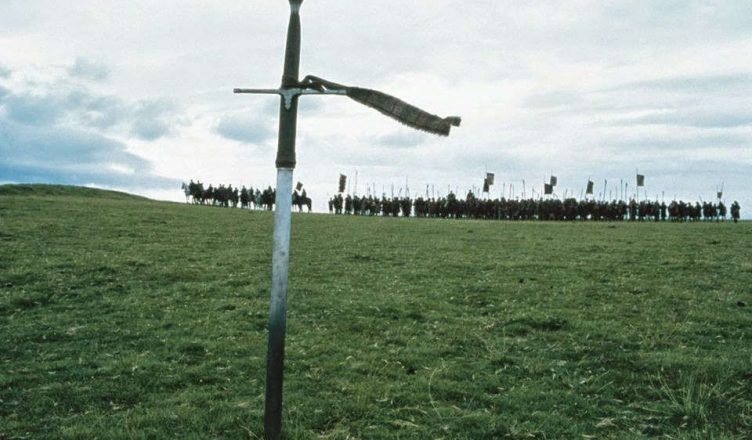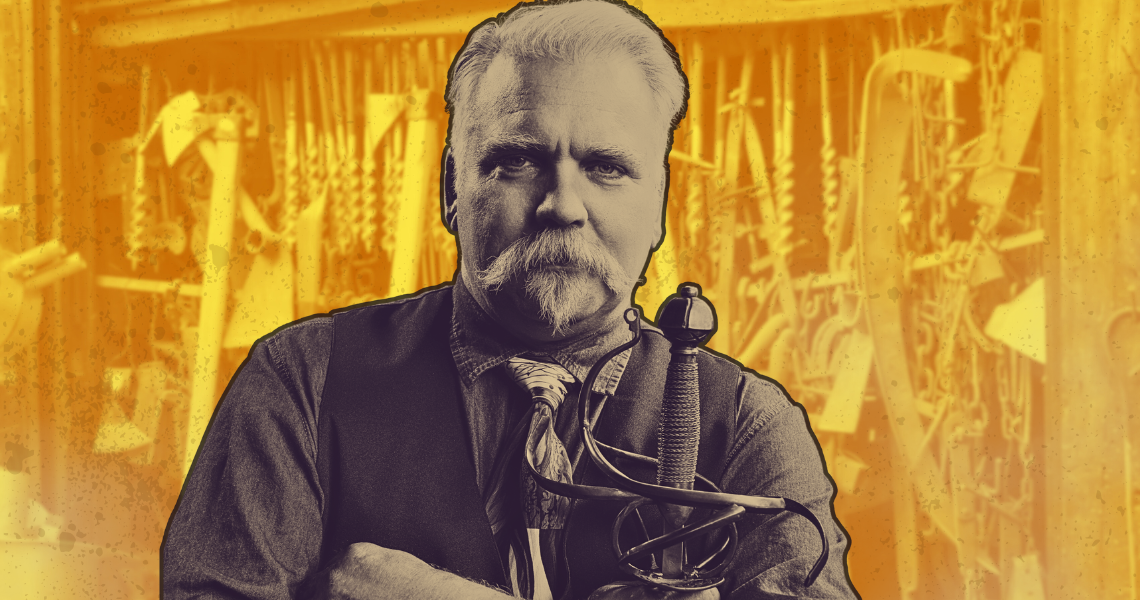The Ten Most Famous Swords From History, Part One
For much of human history, hand-to-hand combat had served as a primary method of diplomacy with the weapons used on the battlefield being an extension of the warrior. Some legendary weapons have become so closely tied to specific historic figures the weapon itself becomes symbolic of nationhood or political ideologies. While some information about these weapons may be more legend than fact, they still give us an exciting insight into the real historic events. While the ancient rulers and warriors themselves can’t be preserved from the ravages of time, their forged weaponry is timeless and leaves a lasting impression about just how these weapons helped shape history.
The Sword of Mars
(Image credit: Sky History)
The Sword of Mars was wielded by Atilla the Hun during his reign of terror throughout Europe during much of the late Roman Empire. The Huns were a militant confederation of tribes originating from the far East who’s brutal methods under Atilla’s leadership struck fear among their enemies long before their arrival. Atilla’s Hun army was known for sacking and obliterating cities across Eastern Europe, leaving complete devastation in their wake, forcing even the once mighty Romans to pay them tribute in thousands of pounds worth of gold. Some accounts describe Atilla as a humble, fair leader, despite his enemies giving him the name “The Scourge of God.”
The Sword of Mars was Atilla’s personal sword which he carried into battle. Atilla himself claimed that Mars, the God of War, had crafted the sword from a meteorite, giving it supernatural powers. Even though Atilla himself had spread this story, his unstoppable rampages across Europe made it seem this rumor could have been true.
Atilla was unique in carrying this sword, as the Huns primarily fought with bows on horseback. Atilla died of a possible brain hemorrhage and was likely buried with his possessions, including his sword. The whereabouts of his grave are unknown, but the legend of his sword carries on.
You can watch two bladesmiths forge this legendary blade during the third round of Forged In Fire Season 6 Episode 16.
William Wallace’s Claymore
(Image credit: Icon Entertainment)
The William Wallace Claymore was wielded by the legendary Scottish knight who led a rebellion against English rule during the Wars of Scottish Independence. This massive two-handed sword stands at a length of five feet and four inches and has the ability to easily cleave victims in half. This sword’s larger-than-life status was wielded by an equally large Wallace who, according to legend, himself stood at almost seven feet tall! The size of the sword coupled with the man who wielded it has, no doubt, led to it’s enduring legacy as a symbol of Scottish independence.
One of Wallace’s most iconic victories came against the English at the Battle of Stirling Bridge in 1297. Outnumbered by English in the thousands, Wallace led his men to victory with this sword in hand. When the English sent a convoy to force a compromise from Wallace he is quoted as saying, “We are not here to do battle but to defend ourselves and liberate our kingdom. Let them come and we shall prove this to their very beards.”
The sword of Wallace is allegedly on display at the National Wallace Monument in Scotland. While the sword on display is claimed to be authentic, others point to the many cosmetic discrepancies as a reason to dispute this claim. Regardless, visitors still may get an impression of this great sword that was wielded by a man of equally great stature.
The sword and Wallace’s likeness were portrayed in the 1995 blockbuster film Braveheart starring Mel Gibson. You can watch two bladesmiths recreate the iconic William Wallace Claymore during round three of Forged In Fire Season 8 Episode 5.
Curtana, The Sword of Mercy
(Image credit: Vitrearum)
Not all swords are designed for battle, but instead are used as symbols of status or ancient tradition. The Curtana is one such sword, serving as an ornament in the assignment of royal titles by the English crown.
(Image credit: The Solomon Code)
Also known as the Sword of Mercy, the Curtana is about thirty-eight inches in length, and features a running wolf emblem indicative of Bavarian craftmanship. Instead of having a sharp tip, the Curtana had a squared, blunt end which was intended to represent the values of mercy and justice which royals are expected to uphold. The original weapon once belonged to Edward the Confessor, one of the last Anglo-Saxon kings of England before the Norman Conquest of 1066. Since then, it has been remade several times and currently resides with the Crown Jewels.
The Sword of Mercy was featured as the finale weapon in Forged In Fire Season 9 Episode 2.
The Zulfiqar
(Image credit: Economy.pk)
The Zulfiqar was the sword belonging to Ali Talib, the leader of the Rashidun Caliph from 656 AD until his assassination in 661 AD. A close relative to the Prophet Muhammad, Talib is said to have received this sword as a personal gift from Islam’s holiest prophet after breaking his original blade.
Ali faced a fracturing Islamic kingdom after Muhammad’s death that was breaking into Sunni and Shia factions. This coincided with many bloody wars, including the battle of Uhud which Talib participated. The sword has become a symbol of the Islamic faith and is featured on many national emblems, both past and present. The split blade design is iconic and had a visible influence on similar blades to come.
The Zulfiqar was the inspiration of the Serrated Tegha Sword which was featured in Forged In Fire Season 8 Episode 8.
Charlemagne’s Joyeuse
(Image credit: The Hungarian-Ottoman Wars)
This saber belonged to Charlemagne, the emperor of The Holy Roman Empire starting in 800 AD. Charlemagne, also known as the Father of Europe, is credited with uniting and Central and Western Europe in wake of the early Roman Empire’s collapse. Under his rule, much of Europe would convert to Christianity.
Not much is known about the Joyeuse other than what is attributed to legend. King Otto III was said to have discovered the sword hidden in his ancestor Charlemagne’s grave in 1000 AD. The sword, among other relics, were kept in various locations around Europe including Austria.
In 1938, while Austria was under Nazi occupation, the sword was moved from Vienna to Nuremburg on Adolf Hitler’s orders. American troops discovered the Saber hidden in an underground tunnel complex during the end of the second World War and returned it to the Hoftburg Palace in Vienna, where it remains today.
Charlemagne’s Joyeuse was featured as the finale weapon in Forged In Fire Season 7 Episode 17.
Want more of the most famous swords in history?
Stay tuned to BRUTE de FORGE for part two and find out if your favorite sword made the cut. In the meantime, give us a follow and subscribe to our newsletter to make sure you never miss a thing.
About The Author
More from Brute de Forge

















